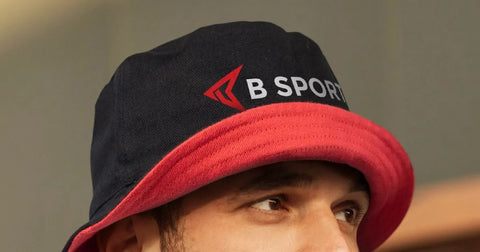Blog / Sales & Marketing / From FOMO to Sold Out: The Science Behind Scarcity Marketing
From FOMO to Sold Out: The Science Behind Scarcity Marketing

Imagine you’re browsing your favorite online store, and suddenly, a flash sale pops up—only two hours left to snag that jacket you’ve been eyeing. Immediately, you feel a rush of urgency. “What if I miss out?” you think. This scenario perfectly illustrates the power of scarcity marketing. Scarcity taps into our fear of missing out (FOMO), driving us to act fast. In this article, we’ll explore how scarcity marketing not only boosts demand but can also create a sense of exclusivity around your brand. We’ll also look at specific strategies you can apply to your business to capitalize on this compelling tactic.
Understanding Scarcity and Why It Works
Scarcity marketing is a strategy that involves limiting the availability of a product or offer to create a sense of urgency. When people feel that an opportunity is rare or about to disappear, they are more likely to act. This reaction is rooted in human psychology; the scarcity principle suggests that we assign more value to things that are harder to obtain. Essentially, when people believe there’s limited availability, they’re more inclined to act immediately to avoid losing out on what they perceive as a valuable opportunity.
Scarcity works because it appeals to both our emotions and our cognitive biases. When we feel that something is scarce, we experience a fear of loss or regret, which can push us to make quicker purchasing decisions. This urgency can be a powerful motivator, making scarcity one of the most effective marketing tactics to drive sales.
Types of Scarcity Tactics to Boost Demand
-
Limited Quantities
Offering a product in limited quantities can create a heightened sense of exclusivity. For instance, a fashion brand might release only a few hundred units of a new jacket. When customers realize that the jacket won’t be restocked, they feel compelled to purchase immediately. Limited quantities often lead to quicker purchasing decisions and even inspire customers to share their purchases on social media, enhancing your brand’s reach. -
Time-Limited Offers
Time-based scarcity, such as flash sales or countdown timers, can significantly increase conversions. Think of the urgency created by a Black Friday sale that lasts just a few hours. Time-limited offers work particularly well online, where you can easily display countdown timers on product pages or in emails. By giving customers a narrow window to act, you create a sense of urgency that encourages impulse purchases. -
Exclusive Access
Sometimes, scarcity isn’t about the product but about who can access it. Membership-only sales or early access events can create exclusivity that appeals to customers. By making offers available only to select groups—like loyalty program members or early-bird subscribers—you make customers feel valued. This exclusivity can build brand loyalty and increase the perceived value of your offerings. -
Seasonal Scarcity
Products that are available only during certain times of the year leverage seasonal scarcity. Think of pumpkin spice lattes in the fall or holiday-themed merchandise. Seasonal scarcity not only drives sales within a specific period but also creates anticipation for the next season. Customers often look forward to these limited-time offerings and are willing to purchase as soon as they become available. -
Limited Production
Many luxury brands capitalize on limited production to maintain exclusivity. By producing a finite number of high-quality items, they can increase demand. Customers are drawn to the idea of owning something that few others have, which justifies a higher price tag. Limited production works well for brands that aim to position themselves as premium or exclusive.
Real-World Examples of Scarcity in Action
-
Supreme’s Limited Edition Drops
Streetwear brand Supreme is a master of scarcity marketing. Each product release, known as a “drop,” is produced in limited quantities and often sells out within minutes. The anticipation surrounding these drops creates a frenzy among fans, who often line up hours in advance. This scarcity tactic has made Supreme one of the most sought-after brands in streetwear, with items frequently resold at a premium. -
Disney Vault
Disney has cleverly used scarcity by placing its classic movies in the “Disney Vault.” At any given time, only a select few titles are available for purchase, creating a sense of urgency among collectors and fans. When Disney re-releases a film, it’s a major event, as fans rush to buy it before it goes back into the vault. This approach not only drives sales but also maintains the long-term value of Disney’s films. -
Airbnb’s Booking Countdown
Airbnb effectively uses scarcity in its listings. If a property has only a few nights left available, Airbnb displays a notification like “Only 2 nights left at this price.” This message not only emphasizes limited availability but also adds a layer of social proof, as potential renters see that others are interested in the property. This strategy encourages users to book sooner rather than later.
How to Apply Scarcity Tactics in Your Marketing Strategy
-
Be Authentic with Your Scarcity
Consumers can often tell when scarcity is fabricated. If you constantly run “limited-time” offers that reappear every few weeks, customers may lose trust in your brand. Instead, be genuine with your scarcity tactics. If you’re offering limited quantities, make sure they are truly limited. Authenticity not only preserves your brand’s reputation but also makes scarcity more effective. -
Leverage Social Proof
When customers see that others are interested in the same product, they feel more inclined to act. Displaying messages like “10 people are viewing this product” or “5 left in stock” can add urgency. Social proof works well alongside scarcity because it reassures customers that others are making the same decision, which reduces hesitation. -
Utilize Countdown Timers
Countdown timers are highly effective for creating time-limited offers. Whether it’s for a flash sale or a product launch, countdown timers add visual urgency, reminding customers that time is running out. You can use countdown timers on product pages, in emails, or on social media ads to increase conversions. -
Highlight the Benefits of Acting Now
When implementing scarcity, emphasize what customers gain by acting quickly. If there’s a time-limited discount, highlight the savings. If there’s limited stock on a popular product, remind customers of its unique features or popularity. By focusing on benefits, you can make scarcity feel more like an opportunity than a sales tactic. -
Reward Loyal Customers with Exclusive Access
Exclusivity can make customers feel valued, which in turn strengthens their loyalty. You can offer early access to new products, private sales, or members-only discounts to your most loyal customers. This not only reinforces their connection to your brand but also encourages others to join loyalty programs or subscribe for exclusive perks.
Conclusion: Why Scarcity Marketing Can Be a Game-Changer for Your Business
Scarcity marketing is powerful because it taps into basic human instincts. It can encourage immediate action, boost demand, and create an emotional connection with your customers. However, it’s important to use scarcity ethically and strategically. Whether you’re offering limited-time discounts, exclusive access, or limited quantities, scarcity can be a valuable addition to your marketing toolkit. When done right, it not only drives sales but also enhances the overall appeal of your brand, making it more desirable and memorable in the minds of your customers.







